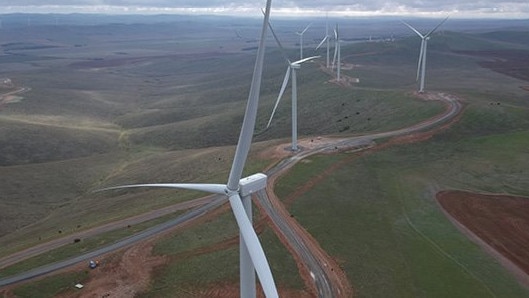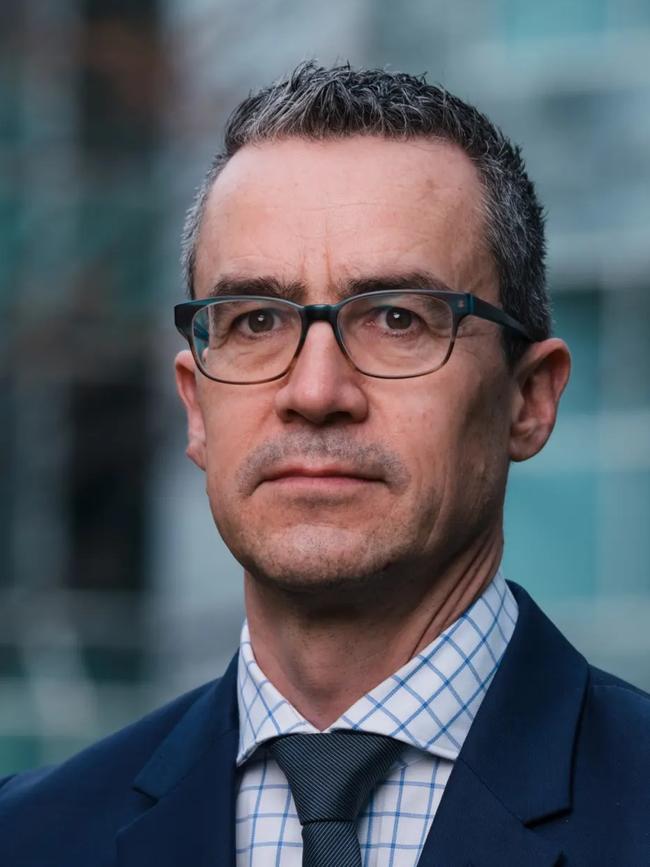We need to lift the pace on renewable energy development
It’s the lowest-cost form of new generation to replace our old coal generators, which are becoming unreliable and expensive.

It’s hard not to be nostalgic for simpler times.
As a nation, so many of us grew up in loungerooms filled with the balmy air of a summer evening, as we sat transfixed by the TV and the heroic run chase of an Australian cricket one-dayer.
At times, the total seemed insurmountable.
Yet our heroes in yellow, led by a swashbuckling Michael Bevan or a Dean Jones, would smash away ball by ball, over by over, until we began closing in on the target.
It was exciting.
It’s how I felt as I read the latest Clean Energy Council’s Quarterly investment report for large-scale renewable generation and storage.
It tracks how many grid-scale renewable energy projects, solar and wind, have been built, as well as storage for the energy they produce.
For those not following the match, we need to accelerate the rollout of renewable energy. Why? Because it’s the lowest-cost form of new generation to replace our old coal generators that are becoming unreliable and expensive.
More renewable energy is critical to lowering power prices.
In recent times, progress has slowed as the challenges mounted. But the latest figures out today show that 1405MW of new generation projects achieved financial commitment in the past three months.
In run rate terms, this is close to what is required but it needs to be sustained every quarter.
We are witnessing early signs of a resurgence in renewable energy investment, one that is crucial if we are to reach the target.
As with sport, preparation, hard work and determination matter. We are witnessing the results of the past few years of behind-the-scenes work by governments and the clean energy sector as a whole.

These figures are cold, hard proof that the renewables industry is becoming the mainstream. And in the background, unseen by the doomsayers, it has been for some time. Renewable energy already produces 40 per cent of Australia’s energy mix and is charging towards 50.
The recent record in battery storage investments, with 1235MW committed in Q3 alone, is particularly encouraging.
This shows a growing recognition of the need for reliable energy storage solutions as we transition away from fossil fuels.
Federal and state governments have set clear targets for renewable energy. Achieving these is challenging given we spent much of the past decade or so bickering about energy and climate policy. We are playing catch-up now.
The momentum needs to be maintained and expanded, given we require an average of 1.5GW of new generation projects each quarter to stay on track.
Like international cricket, specifically the 20-20 player market, the investment landscape for renewable energy is highly competitive.
Australia must continue to position itself as an attractive destination for capital.
Like the Australian cricket team, we’re a powerhouse, but all nations are working hard to improve their performance, something we have a tendency to forget.
Making Australia the best place to invest means crafting policies that streamline planning and environmental assessments, as well as enhancing transmission infrastructure to connect new generation projects to the grid. If we fail to address these issues, we risk stalling the very progress we have made.
While the latest investment figures offer a glimpse of a brighter future, they are also a clarion call for action.
We must harness this momentum, build on our successes, and tackle the barriers that remain.
The transition to renewable energy is crucial to replace old coal and keep power prices down. It is an opportunity for economic growth and technological innovation that we cannot afford to squander.
In simple terms, with renewables penetration at about 40 per cent of supply, we’re half- way to the total. What we do with the remaining overs is up to us.
Come on Aussie, come on!
Kane Thornton is the chief executive of the Clean Energy Council.





To join the conversation, please log in. Don't have an account? Register
Join the conversation, you are commenting as Logout